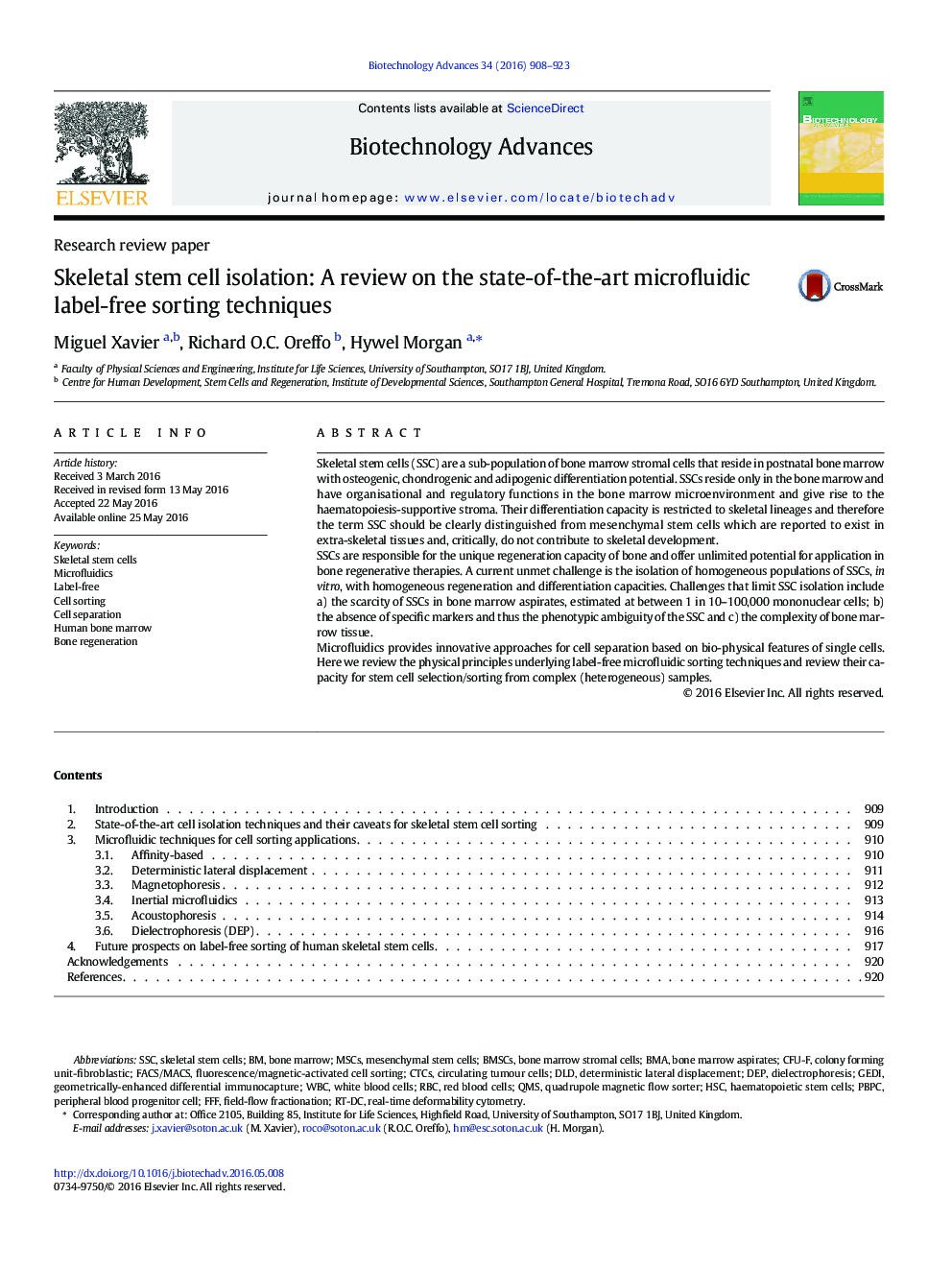| Article ID | Journal | Published Year | Pages | File Type |
|---|---|---|---|---|
| 6451230 | Biotechnology Advances | 2016 | 16 Pages |
Skeletal stem cells (SSC) are a sub-population of bone marrow stromal cells that reside in postnatal bone marrow with osteogenic, chondrogenic and adipogenic differentiation potential. SSCs reside only in the bone marrow and have organisational and regulatory functions in the bone marrow microenvironment and give rise to the haematopoiesis-supportive stroma. Their differentiation capacity is restricted to skeletal lineages and therefore the term SSC should be clearly distinguished from mesenchymal stem cells which are reported to exist in extra-skeletal tissues and, critically, do not contribute to skeletal development.SSCs are responsible for the unique regeneration capacity of bone and offer unlimited potential for application in bone regenerative therapies. A current unmet challenge is the isolation of homogeneous populations of SSCs, in vitro, with homogeneous regeneration and differentiation capacities. Challenges that limit SSC isolation include a) the scarcity of SSCs in bone marrow aspirates, estimated at between 1 in 10-100,000 mononuclear cells; b) the absence of specific markers and thus the phenotypic ambiguity of the SSC and c) the complexity of bone marrow tissue.Microfluidics provides innovative approaches for cell separation based on bio-physical features of single cells. Here we review the physical principles underlying label-free microfluidic sorting techniques and review their capacity for stem cell selection/sorting from complex (heterogeneous) samples.
